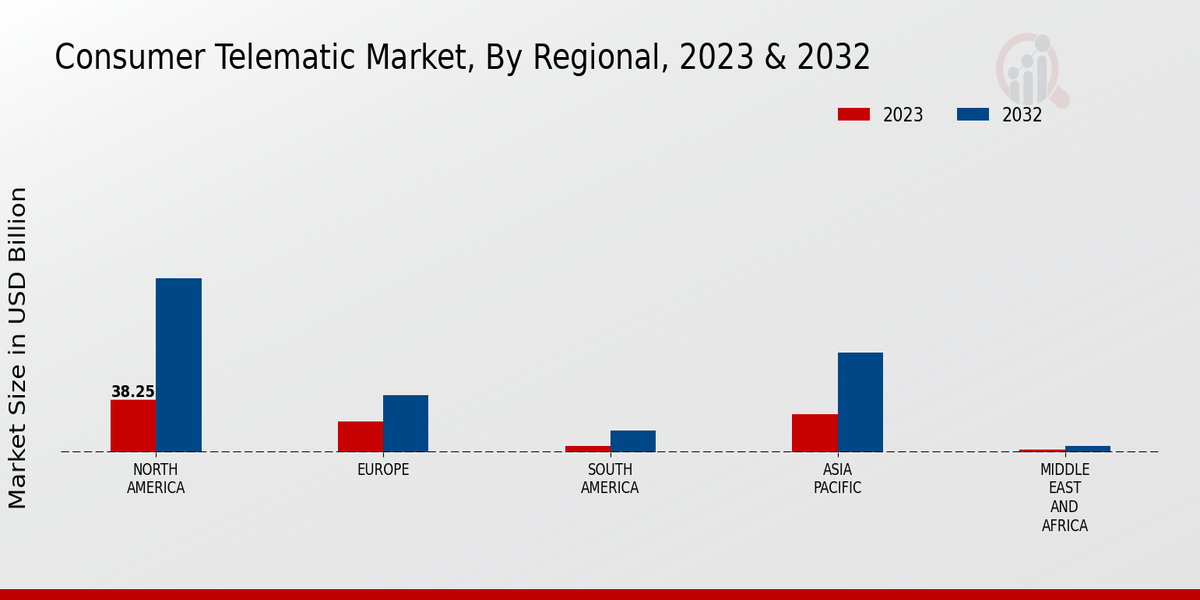Market Growth Projections
The Global Consumer Telematic Market Industry is poised for substantial growth, with projections indicating a market value of 58.0 USD Billion in 2024 and an anticipated increase to 273.9 USD Billion by 2035. This growth trajectory suggests a robust compound annual growth rate (CAGR) of 15.16% from 2025 to 2035, reflecting the increasing integration of telematics in vehicles and the rising demand for connected services. The expansion of telematics applications across various sectors, including insurance, fleet management, and personal vehicle use, further underscores the market's potential. These projections highlight the transformative impact of telematics on the automotive landscape.
Consumer Awareness and Acceptance
Consumer awareness and acceptance of telematics technologies are crucial drivers in the Global Consumer Telematic Market Industry. As consumers become more informed about the benefits of telematics, including improved safety, efficiency, and convenience, their willingness to adopt these technologies increases. Educational initiatives and marketing campaigns by automotive manufacturers and telematics service providers play a vital role in enhancing consumer understanding. This growing acceptance is reflected in the increasing sales of vehicles equipped with telematics systems, suggesting a shift in consumer behavior towards embracing connected technologies. The market's expansion is likely to be fueled by this rising consumer engagement.
Rising Demand for Connected Vehicles
The Global Consumer Telematic Market Industry experiences a surge in demand for connected vehicles, driven by consumer preferences for enhanced safety and convenience features. As of 2024, the market is valued at 58.0 USD Billion, reflecting a growing inclination towards technologies that offer real-time data and connectivity. This trend is likely to continue as automakers integrate advanced telematics systems into their vehicles, enabling functionalities such as navigation, diagnostics, and emergency assistance. The increasing adoption of electric and autonomous vehicles further propels this demand, suggesting a transformative shift in consumer expectations and automotive design.
Emerging Markets and Global Expansion
Emerging markets present significant opportunities for growth within the Global Consumer Telematic Market Industry. As economies in regions such as Asia-Pacific and Latin America develop, the demand for connected vehicles and telematics services is expected to rise. Factors such as increasing disposable incomes, urbanization, and a growing middle class contribute to this trend. Automotive manufacturers are increasingly targeting these markets, adapting their telematics offerings to meet local needs and preferences. This global expansion strategy not only enhances market penetration but also drives innovation in telematics solutions tailored for diverse consumer bases.
Technological Advancements in Telematics
Technological advancements significantly influence the Global Consumer Telematic Market Industry, as innovations in hardware and software enhance telematics capabilities. The integration of artificial intelligence, machine learning, and big data analytics into telematics systems enables more sophisticated data processing and predictive analytics. These advancements allow for improved vehicle performance monitoring, predictive maintenance, and personalized user experiences. As the market evolves, the potential for new applications, such as vehicle-to-everything communication, emerges, indicating a dynamic landscape. The projected CAGR of 15.16% from 2025 to 2035 highlights the rapid pace of technological evolution within the industry.
Government Regulations and Safety Standards
Government regulations play a pivotal role in shaping the Global Consumer Telematic Market Industry. Stricter safety standards and mandates for vehicle connectivity are emerging globally, compelling manufacturers to adopt telematics solutions that enhance vehicle safety and compliance. For instance, regulations requiring vehicle tracking and emergency response systems are becoming commonplace. This regulatory environment not only fosters innovation but also drives investment in telematics technologies, as companies strive to meet compliance requirements. The anticipated growth in the market, projected to reach 273.9 USD Billion by 2035, underscores the importance of regulatory frameworks in advancing telematics adoption.
















